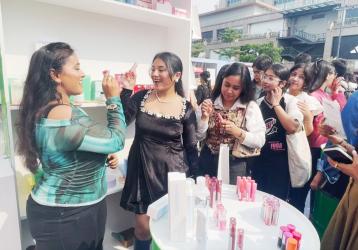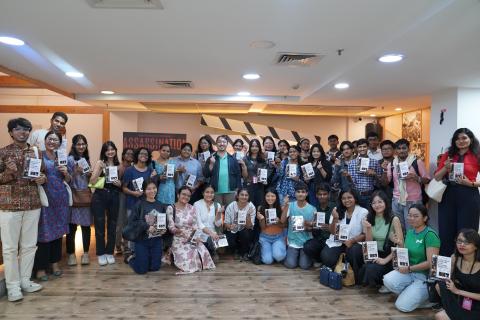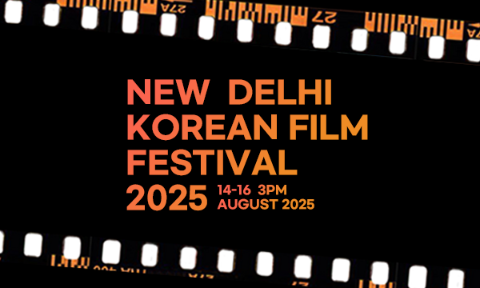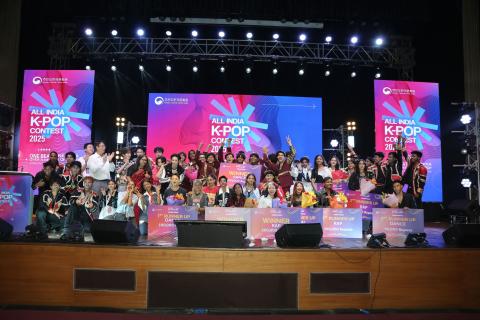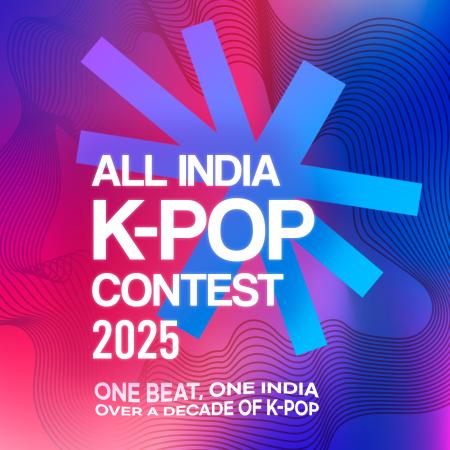Program
-
‘Rang De Korea,’ India’s Largest Korean Cultural Festival, Held Successfully
In October 2025, the Korean Cultural Centre India (KCCI) brought the spirit of Seoul to India’s two largest cities — New Delhi and Mumbai — through its landmark cultural festivals “Rang De Korea” and “K-Harmony Festa.” Held on October 11 at Nexus Select CITYWALK (New Delhi) and October 12 at Jio World Drive (Mumbai), the back-to-back festivals attracted thousands of enthusiastic visitors who immersed themselves in the vibrant world of Korean culture, food, fashion, and performances. △ Before the gates opened, many young visitors lined up eagerly to enter △ Indian youngsters enjoy a Korean-style picnic at the Hangang Park zone. △ Visitors pose in front of the Gangneung Jumunjin bus stop zone, inspired by the location featured on a BTS album cover. △ Visitors exploring K-food stalls at the “Street of Seoul” Jongno experience zone. △ Young visitors try out samples from Amorepacific and several other Korean beauty brands. △ The immersive “Bukchon Hanok Village” zone recreates the charm of traditional Korean architecture, where visitors can also try on Hanbok. △ YOUNITE’s special fan meet — creating heartwarming moments with Indian fans.
Post Date 2025-10-16 -
4th New Delhi Korean Film Festival at KCCI: Commemorating the 80th Anniversary of Korean Liberation Day Event Period 2025-08-14 - 2025-08-16
The Korean Cultural Centre India hosted the 4th New Delhi Korean Film Festival and a special photo exhibition titled “Korea, In the Shadows of Pain, The Light of Dreams” simultaneously from 14 to 16 August 2025, to mark the 80th Anniversary of Korean Liberation. The events were organised to commemorate both 80th Anniversary of Korean Liberation Day and Independence Day of India – celebrated on 15 August, and aimed to reaffirm the shared values of freedom and human dignity between the two countries through the medium of culture and art. The events highlighted Korea’s history and culture through films and photographs, while underscoring the enduring friendship between Korea and India. ▲︎ Visitors experience key moments of Korea’s history at the interactive Polaroid photo zone inside the exhibition. ▲︎ Visitors discuss the meanings within the works, sharing the messages conveyed by the artists. ▲︎ Visitors view the interactive displays, exchanging their reflections. ▲︎ Visitors contemplate the works capturing Korea’s past, immersed in deep appreciation. ▲︎ Visitors explore the interactive displays, reflecting on Korea’s modern history. ▲︎ Opening film ‘Dongju: The Portrait of a Poet’ (2016) portrayed the life and resistance of poet Yun Dong-ju. ▲︎ Actress Moon Choi interacted with the Indian film viewers in an online ‘Cine Talk’ and spoke about the significance of Yun Dong-ju and expressed her interest in Indian cinema. ▲︎ Audiences enjoyed watching the films and reflected on the shared history of Korea and India. ▲︎ Audiences experienced the face-painting activity featuring the two nations’ flags. ▲︎ Audiences shared their thoughts on the comment wall celebrating Korea–India friendship. ▲︎ A group photo of the audience was taken after the film screenings and activities.
Post Date 2025-08-28 -
New Delhi Korean Film Festival 2025 (14–16 August) Event Period 2025-08-14 - 2025-08-16
NDKFF 2025 is here. Join us for three powerful films that speak truth to power, explore resistance, and leave a lasting impact. Over the course of three days, audiences will experience stories that challenge, provoke, and move the soul. Dates: 14–16 August 2025 (Thursday to Saturday), 3:00 PM daily Venue: Basement Auditorium, Korean Cultural Centre India (KCCI) Registration: Seats are limited. Advance registration is required (see QR code and link below). Screening Schedule 14 August – Dongju A poignant portrait of poet Yun Dong-ju, who dreams and resists under colonial rule—a quiet yet powerful voice of youth, defiance, and sacrifice. 15 August – Assassination Set in the 1930s, this gripping espionage thriller follows resistance fighters as they attempt a high-stakes mission against the occupying empire. 16 August – Dark Nuns When faith is tested by horror—two nuns carry out a forbidden exorcism and confront a terrifying evil beyond comprehension. Official Trailer Now Available Preview the powerful stories that shook a nation. Watch the trailer and be part of the cinematic experience.
Post Date 2025-07-25 -
2025 All-India K-Pop Contest: A Heartfelt Chorus from India to K-Pop Event Date 2025-07-19
The Grand Final of All-India K-pop Contest 2025, India's biggest live celebration of Korean pop culture, was organised by The Korean Cultural Centre India in New Delhi on July 19. True to its tagline, “One Beat, One India, Over a Decade of K-Pop”, the All India K-pop Contest has played a pioneering role in spreading Hallyu (the Korean Wave) across India over the past 15 years. Now in its 15th edition, the event has unearthed exceptional talent over the years and featured high-energy performances by K-Pop enthusiasts from across the country. \ ▲︎ Indian audiences queued up outside the venue to see the K-pop contest. ▲︎ At the beauty booth inside the venue, Indian audiences experienced Korean cosmetic products. ▲︎ Delhi-based K-pop group, ‘3plus4crew’ was awarded the top prize in the dance category after a scintillating performance to ‘Super’ by Seventeen. ▲︎ In the vocal category, Shylee Preetam from Hyderabad, was announced as the winner after her soulful performance on ‘U & I’ by Ailee. ▲︎ In the inaugural ‘rap’ category competition that was introduced this year, Riniya Taku from Itanagar was adjudicated as the winner after performing to ‘Backpacker’ by Zerobaseone. ▲︎ Indian K-pop lovers were over the moon as NOMAD performed to their blockbuster titles such as ‘No Pressure’, ‘California Love’, ‘Compare’ and ‘Carnival’. ▲︎ In a special ‘Fan Meeting’ session, the five members of NOMAD – Sangha, Doy, One, Rivr, and Junho – also interacted with their Indian fans and tried their hand at learning some Hindi greetings. ▲︎ A celebratory moment as the winners and judges gathered on stage for a group photograph.
Post Date 2025-07-24 -
2025 All India K-pop Contest Final - Schedule Event Date 2025-07-19
Join us for a special evening of music, fandom, and celebration. Date: 19 July 2025 (Saturday) Venue: O.P. Jindal Auditorium, New Delhi [Event Schedule] 2:00 PM – Experience booths open (K-fashion, K-beauty skincare, and more) 4:00 PM – NOMAD Fan Meeting 5:00 PM – All India K-POP Contest 2025 Grand Finale ※ Entry to the auditorium is permitted only to those with valid tickets. ※ However, the lobby experience booths are open to all attendees. ※ On-site registration may be available, subject to availability.
Post Date 2025-07-17

